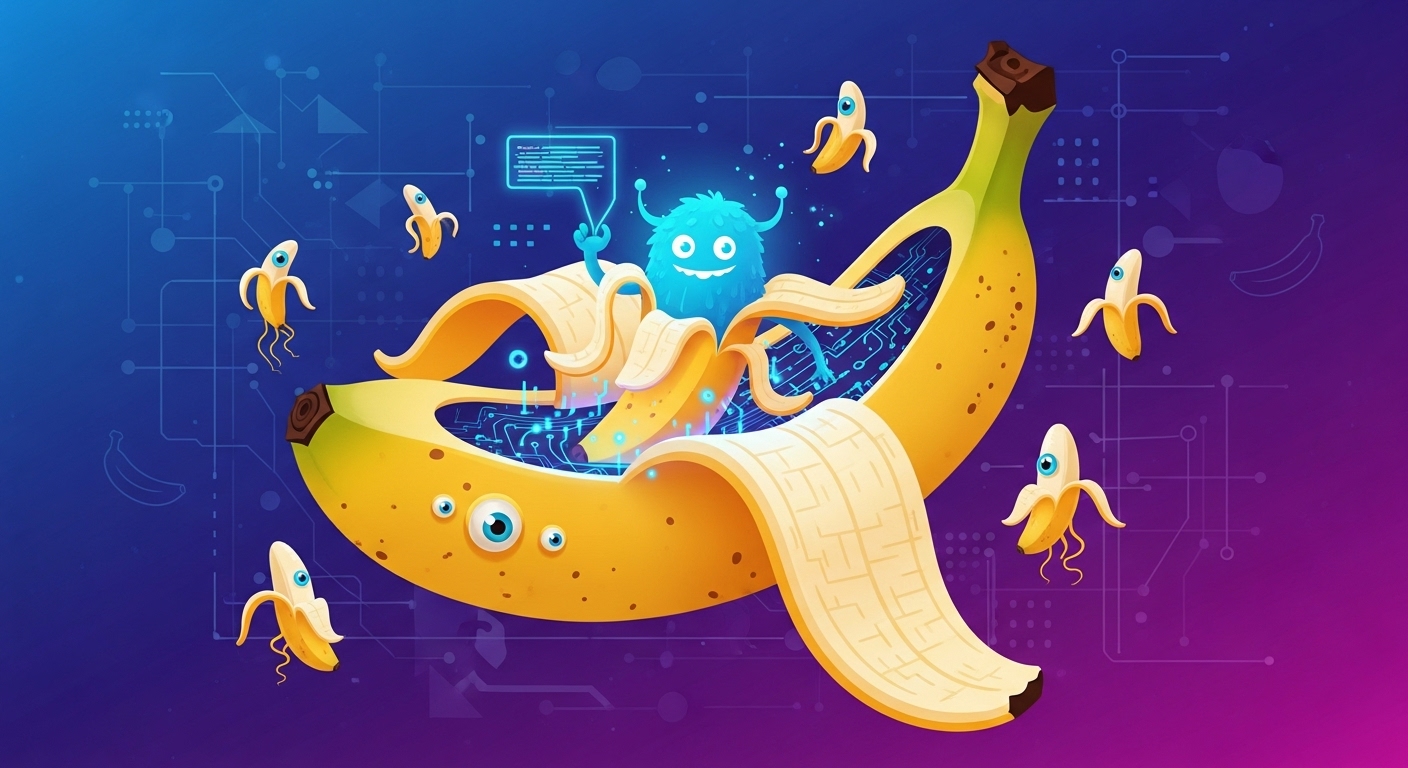# Peeling Back Python: Nano Banana Monster’s Guide to Your First Lines of Code
Welcome, aspiring code adventurers, to the Nano Banana Monster lab! Ever looked at a screen full of code and thought, “Wow, that looks like a secret language”? Well, today, we’re going to demystify one of the friendliest and most powerful languages out there: Python. Forget complex incantations for a moment; we’re starting with the very first steps, the equivalent of learning to say “hello” in a brand new world.
## Why Python, Anyway?
Python isn’t just popular; it’s practically a superstar in the programming world, and for good reason! It’s renowned for its readability, which means its syntax is very close to plain English. This makes it incredibly beginner-friendly. But don’t let its simplicity fool you; Python is used by giants like Google, NASA, and Netflix for everything from web development and data science to artificial intelligence and automation. If you can dream it, chances are Python can help you build it. It’s like a versatile, super-powered banana for your coding smoothie!
## Getting Started: Your First “Hello, World!”
Before we write any code, you’ll need Python installed on your computer. If you don’t have it, head over to [python.org](https://www.python.org/) and download the latest version. Alternatively, for just trying out code, you can use an online Python interpreter like Replit or Google Colab. Once you’re set up, open your text editor (like VS Code, Sublime Text, or even Notepad) and save an empty file as `hello.py`. Now, type this:
“`python
print(“Hello, Nano Banana Monster!”)
“`
Save the file. Now, open your terminal or command prompt, navigate to where you saved `hello.py`, and type `python hello.py`. Press Enter, and behold! You should see:
“`
Hello, Nano Banana Monster!
“`
Congratulations! You just wrote and executed your very first Python program. The `print()` function is a built-in Python command that displays whatever you put inside the parentheses (in this case, a string of text) to the console.
## Variables: Your First Storage Box
Programs often need to remember things. That’s where variables come in. Think of a variable as a named container or a label for a piece of information. You can store numbers, text, or pretty much anything else in them. Let’s try it:
“`python
message = “Welcome to the Jungle!”
num_bananas = 5
is_awesome = True
print(message)
print(num_bananas)
print(is_awesome)
“`
Run this code, and you’ll see each piece of information printed. Here, `message`, `num_bananas`, and `is_awesome` are variables. We’ve assigned them different types of data.
### A Quick Peek at Data Types
Python automatically figures out the type of data you’re storing. Some common types include:
* **Strings (`str`):** Text, enclosed in single or double quotes (e.g., `”banana”`, `’monster’`).
* **Integers (`int`):** Whole numbers (e.g., `10`, `-5`, `1000`).
* **Floats (`float`):** Numbers with a decimal point (e.g., `3.14`, `0.5`).
* **Booleans (`bool`):** Represents truth values: `True` or `False`.
## Lists: Organizing Your Bananas
What if you have a collection of items, like a basket of fruits? Python has data structures for that, and one of the simplest is a list. A list is an ordered collection of items.
“`python
favorite_fruits = [“banana”, “apple”, “mango”, “grape”]
print(favorite_fruits)
print(favorite_fruits[0]) # Lists are zero-indexed, so 0 is the first item
“`
Running this will first print the entire list, then just “banana” (because it’s the item at index 0).
## Why Keep Peeling?
You’ve taken your first giant leap into the world of programming! These fundamental concepts – printing, variables, and basic data types – are the building blocks for everything else you’ll learn. From here, you can start exploring control flow (if/else statements, loops), functions, classes, and so much more. Python’s versatility means you’re not just learning a language; you’re opening doors to countless possibilities in tech.
Keep experimenting, keep asking questions, and don’t be afraid to make mistakes – that’s how we learn! The Nano Banana Monster believes in you. Happy coding!
